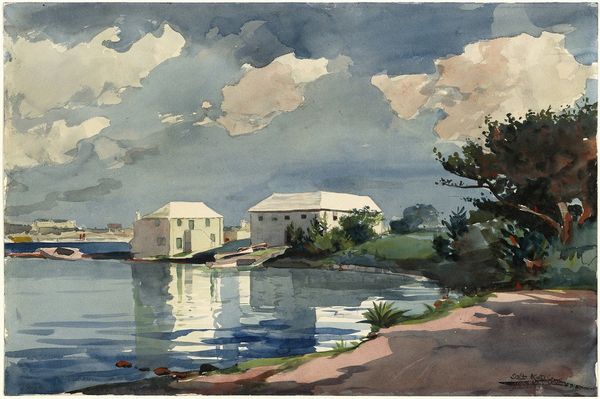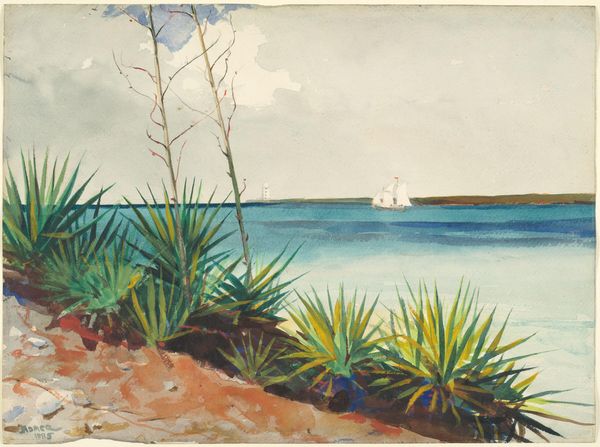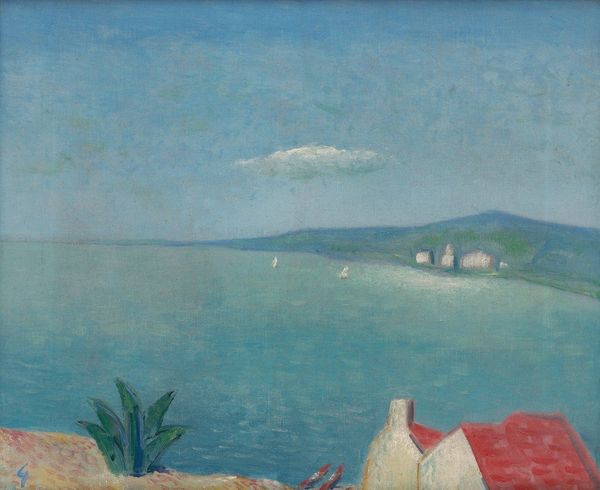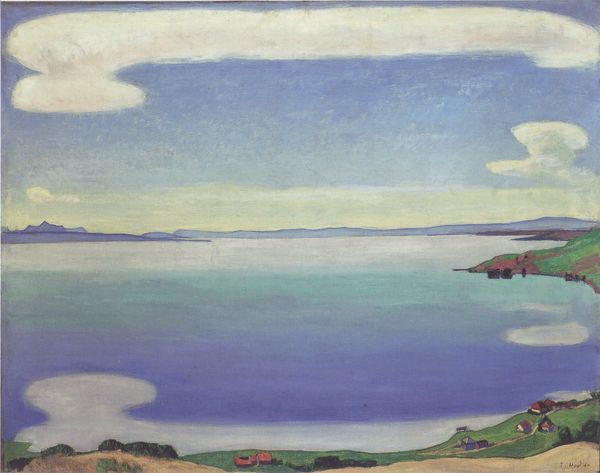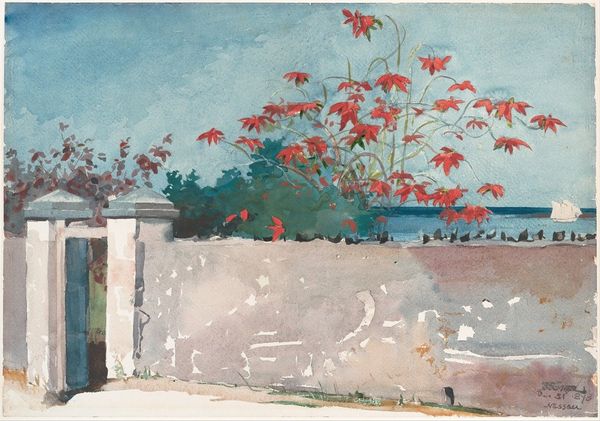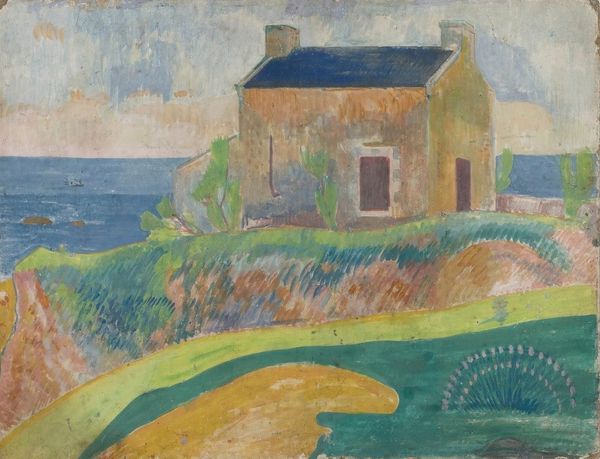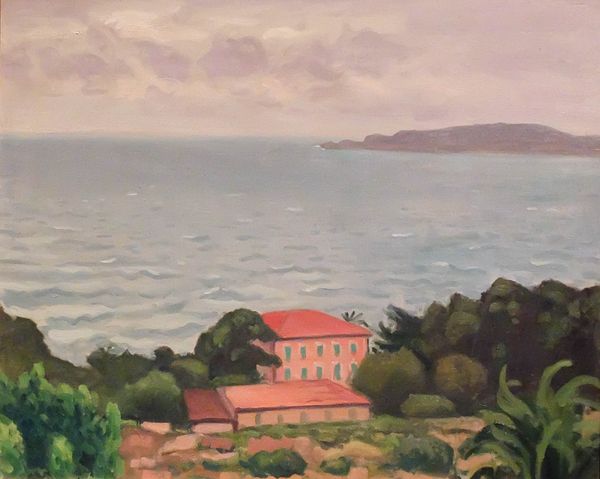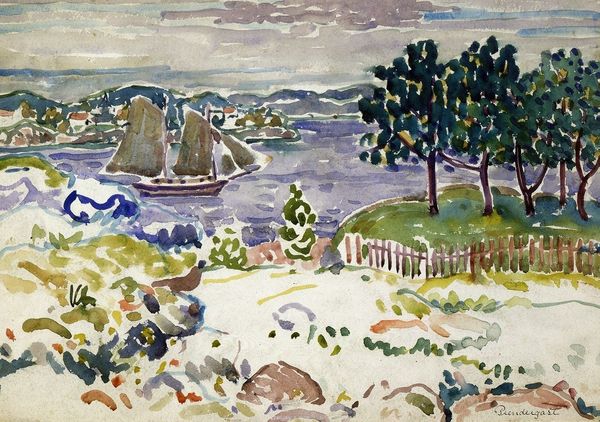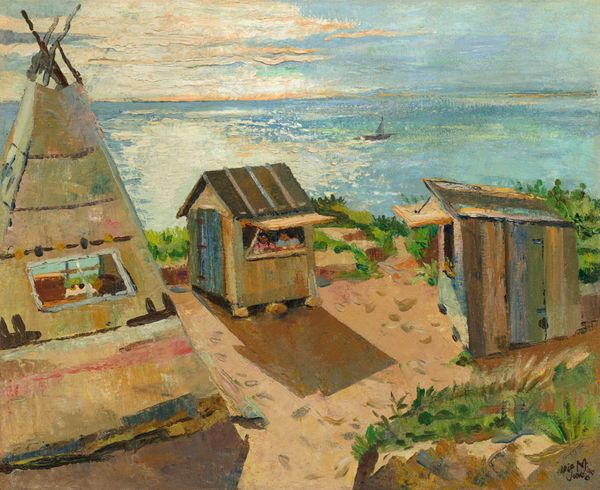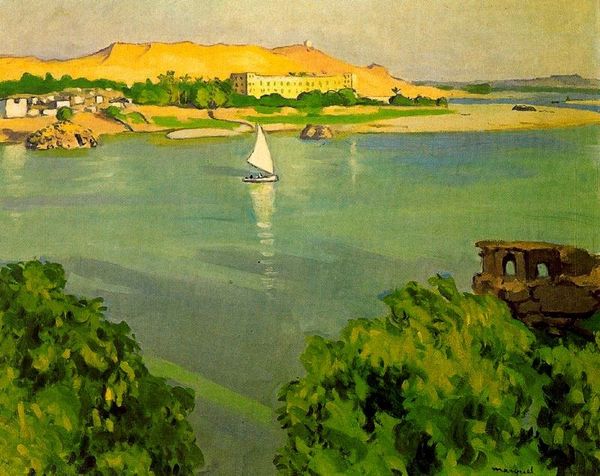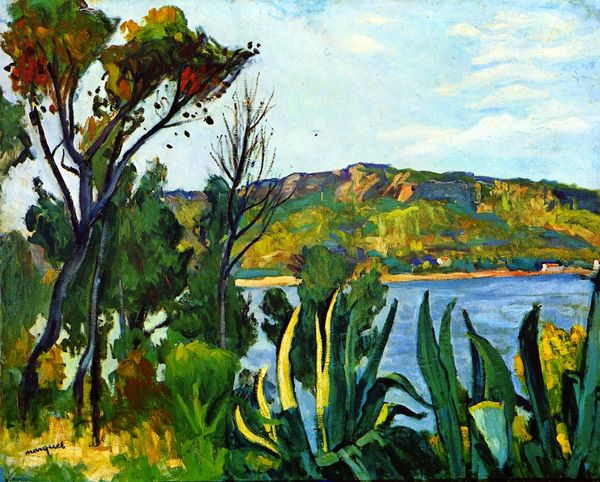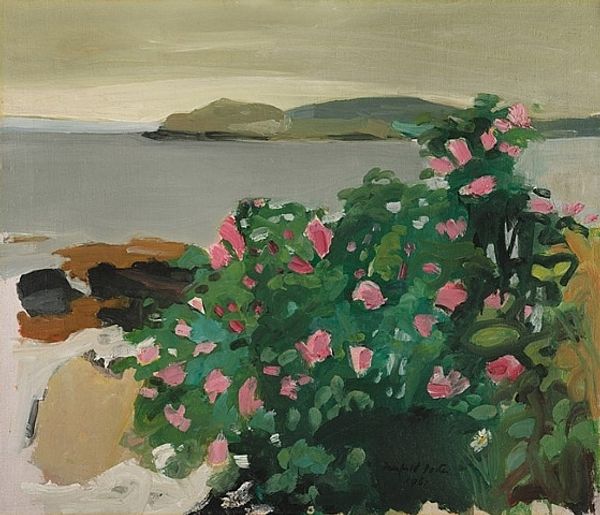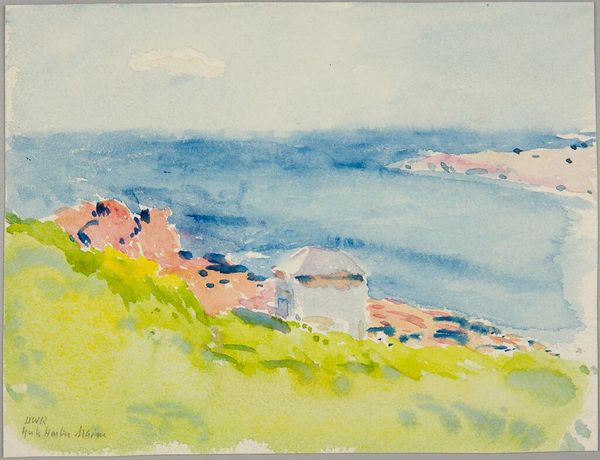
Copyright: Public Domain: Artvee
Editor: Winslow Homer's "Flower Garden and Bungalow, Bermuda," made in 1899 using watercolor, really strikes me with its almost photographic immediacy. It feels so transient, a moment captured. What’s your take? Curator: Given Homer's interest in capturing everyday life, especially regarding the labor involved in accessing these exotic locales, consider the material circumstances allowing him to be in Bermuda in the first place. This isn’t just a pretty scene; it speaks to access and privilege. Editor: So, you're saying it’s not just a landscape, but about who gets to experience this landscape? Curator: Exactly. The ease of travel, the leisure time to paint – these are directly linked to the materials available to Homer and, crucially, not to the local Bermudians whose labor likely supported his stay. What about the materiality of the watercolor itself? Does the fluidity suggest anything to you about the artistic process here? Editor: It does seem quick, immediate, like he's capturing a feeling more than a photographic representation. The paint almost feels like it's part of the landscape, just flowing. But does that detract from your initial point about the social context? Curator: Not at all. The technique reinforces it. Watercolor allowed for quicker, on-site creation, perfect for a visiting artist documenting, and therefore consuming, the "exotic." This consumption becomes part of the artwork's narrative. We must look at what materials are at hand, and who’s doing the hands-on creating and from what power positions. Editor: That makes a lot of sense. It's almost unsettling how such a peaceful scene can be rooted in inequalities related to artistic practice. Curator: Precisely. And by acknowledging that, we engage more critically with the piece, and Homer's legacy. Editor: Thanks, I never would have considered those factors otherwise.
Comments
No comments
Be the first to comment and join the conversation on the ultimate creative platform.
